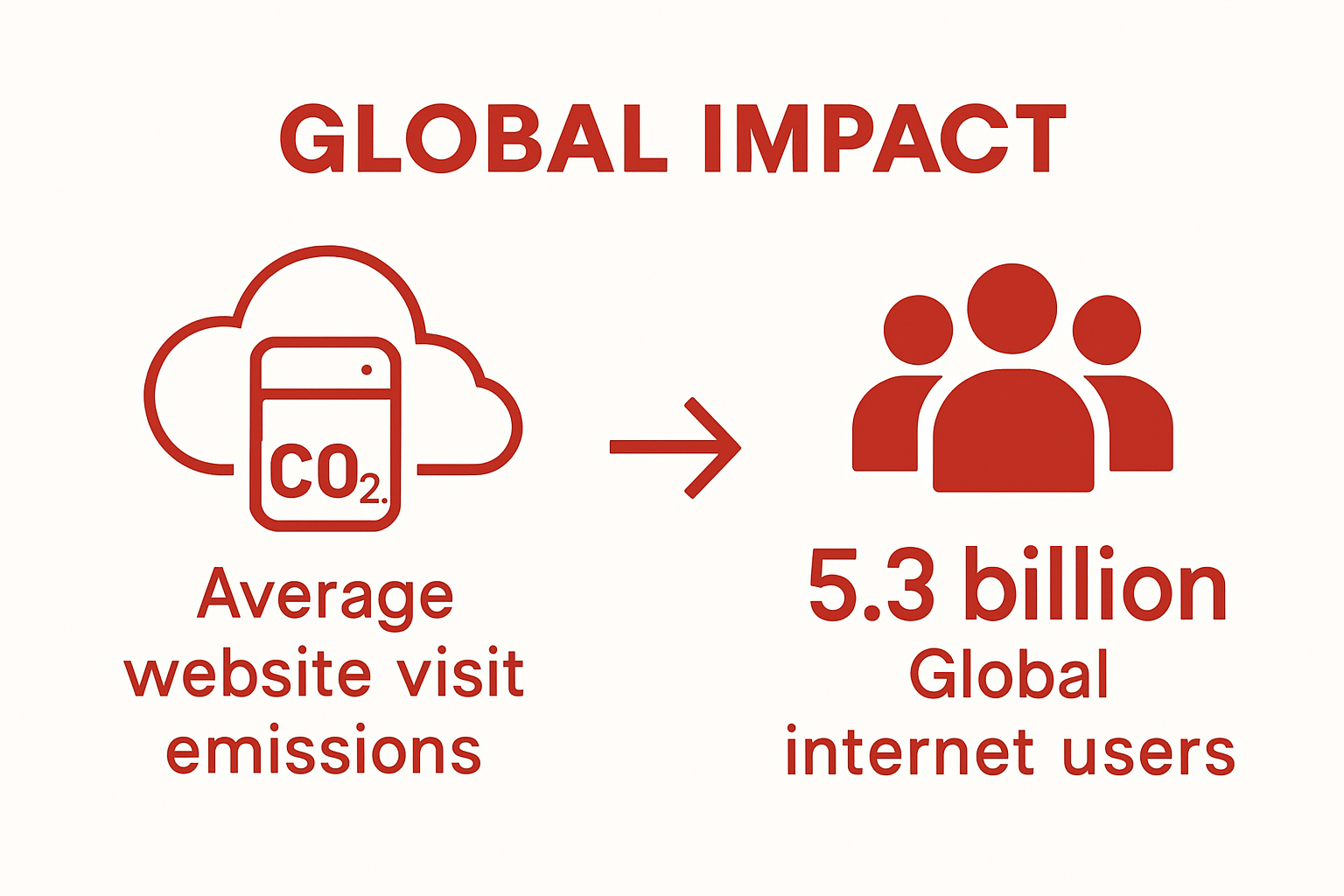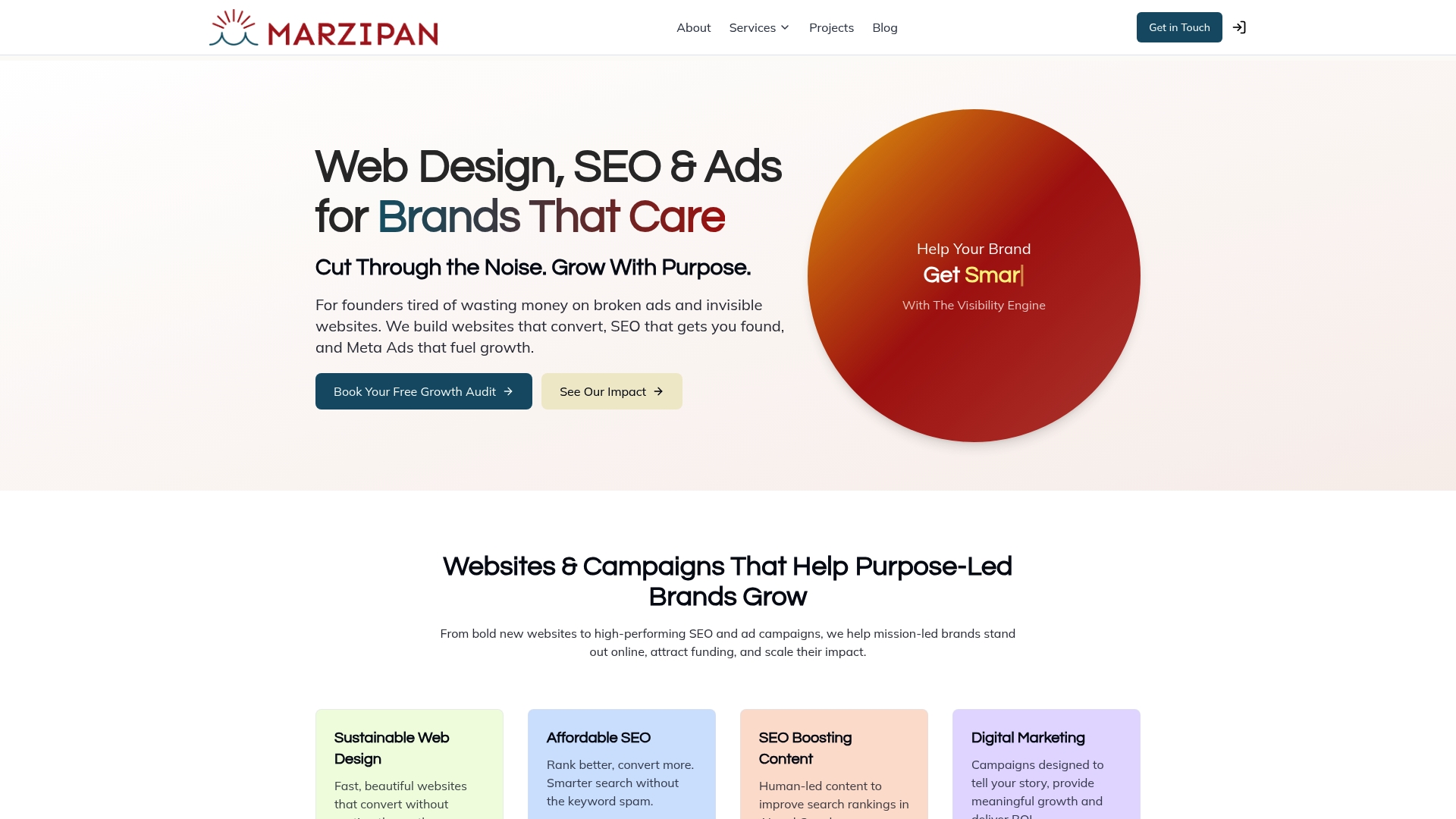Understanding Sustainable Website Features Explained
Most people never think about the carbon impact behind every website visit, yet even a single click can generate about 1.76 grams of carbon dioxide. Surprising, right? Websites are quietly acting like factories, churning out emissions even as they load beautiful images and seamless designs. But it turns out that the most responsible and innovative websites now do much more than just look good or load quickly. They are carefully crafted to shrink environmental harm at every layer, proving that good design can tread lightly on the planet.
Table of Contents
- What Are Sustainable Website Features?
- Why Sustainable Websites Matter For The Environment
- How Sustainable Website Features Function
- Key Concepts Behind Sustainable Web Design
- Real-World Examples Of Sustainable Websites
Quick Summary
| Takeaway | Explanation |
|---|---|
| Sustainable design minimises digital carbon footprint | Effective website design reduces energy consumption by optimising images, coding, and using green hosting. |
| Accessibility enhances user experience | Including features for users with disabilities improves overall engagement and satisfaction on websites. |
| Adopt minimalist design architectures | Simplifying design reduces data transfer and computational resources, leading to faster loading times. |
| Implement efficient coding practices | Lightweight code structures and intelligent caching minimise resource usage while maintaining performance. |
| Align with growing consumer expectations | Businesses adopting sustainable practices demonstrate responsibility, attracting environmentally conscious users. |
What are Sustainable Website Features?
Sustainable website features represent a holistic approach to digital design that minimises environmental impact while maximising efficiency and user experience. At its core, sustainable web design goes beyond traditional aesthetics and performance, integrating principles of energy conservation, accessibility, and responsible digital practices.
Environmental Digital Footprint
Every website consumes energy through data centres, network infrastructure, and user devices. Research from the Clean Energy Regulator highlights that sustainable websites focus on reducing this digital carbon footprint through strategic design choices. Key considerations include:
- Optimising image and media file sizes
- Using efficient coding practices
- Minimising unnecessary data transfers
- Selecting green web hosting providers
User Accessibility and Design
Sustainability in web design extends beyond environmental concerns to include user experience and inclusivity. Our sustainable web design approach emphasises creating websites that are accessible to all users, including those with disabilities. This means implementing clear navigation, readable typography, high colour contrast, and compatibility with assistive technologies.
Practical sustainable website features involve streamlining content, reducing unnecessary animations, and ensuring quick loading times. These strategies not only decrease energy consumption but also improve overall user engagement and satisfaction. By prioritising efficiency and accessibility, websites can deliver superior experiences while contributing to broader environmental sustainability goals.
This table outlines the primary sustainable website features highlighted in the article, along with concise explanations of their function and environmental benefit.
| Feature | Function | Environmental Benefit |
|---|---|---|
| Optimised Image & Media Files | Reduces file sizes for faster loading | Lowers data transfer and energy usage |
| Efficient Coding Practices | Uses lightweight code and caching mechanisms | Minimises server processing power |
| Green Web Hosting | Hosts websites on renewable energy-powered servers | Cuts overall carbon emissions |
| Minimalist Design Architecture | Simplifies layout and visual elements | Reduces computational resource requirements |
| Accessibility Enhancements | Implements inclusive navigation and readable content | Improves engagement and can decrease digital waste |
| Adaptive/Responsive Design | Adjusts content delivery based on device and context | Further optimises resource consumption |
Why Sustainable Websites Matter for the Environment
Websites are not traditionally viewed as environmental culprits, but digital infrastructure generates substantial carbon emissions. The global internet ecosystem produces significant greenhouse gas emissions, comparable to the aviation industry, making sustainable web design critically important for environmental conservation.
Digital Carbon Emissions Landscape
Research from the Australian Competition and Consumer Commission reveals the importance of transparent environmental practices. Digital infrastructure contributes to carbon emissions through multiple channels:
- Data centre energy consumption
- Network transmission infrastructure
- End-user device electricity usage
- Server and cloud computing power requirements
Quantifying Website Environmental Impact
A single website visit generates approximately 1.76 grams of carbon dioxide, which might seem negligible.
 However, with billions of global internet users, these emissions rapidly accumulate. Sustainable web design directly reduces this digital carbon footprint by implementing energy-efficient technologies and optimising digital resources. Check your website’s carbon impact to understand your digital environmental contribution.
However, with billions of global internet users, these emissions rapidly accumulate. Sustainable web design directly reduces this digital carbon footprint by implementing energy-efficient technologies and optimising digital resources. Check your website’s carbon impact to understand your digital environmental contribution.
Moreover, sustainable websites demonstrate corporate responsibility and align with growing consumer expectations for environmentally conscious digital experiences. By prioritising energy efficiency, businesses can significantly reduce their digital carbon emissions while maintaining high-performance online platforms.
The following table summarises the main categories of digital carbon emission sources discussed in the article and the specific measures sustainable websites employ to address them for reduced environmental impact.
| Emission Source | Description | Sustainable Solution |
|---|---|---|
| Data Centre Energy Consumption | Power used by servers hosting websites | Use green hosting and energy-efficient hardware |
| Network Transmission Infrastructure | Energy for internet infrastructure delivering content | Minimise data transfers and optimise resource delivery |
| End-User Device Electricity Usage | Electricity consumed by users loading websites | Simplify design and reduce media file sizes |
| Server and Cloud Computing Power | Computational energy for processing and serving content | Implement lightweight code and intelligent caching |

How Sustainable Website Features Function
Sustainable website features operate through sophisticated technological strategies that minimise digital resource consumption while maintaining optimal performance.
These features work by intelligently reducing energy expenditure across multiple digital infrastructure layers, creating more environmentally responsible online experiences.
Technical Efficiency Mechanisms
Research from GovCMS demonstrates that sustainable website features function through several core technological approaches:
- Implementing lightweight, efficient code structures
- Utilising adaptive design technologies
- Compressing digital assets without compromising quality
- Employing intelligent caching mechanisms
Performance and Energy Optimization
Sustainable web design transforms how digital resources are consumed by creating intelligent interaction pathways. Websites leverage advanced technologies to dynamically adjust content delivery, reducing unnecessary data transfers and minimising computational overhead. Explore our sustainability insights to understand the intricate balance between performance and environmental responsibility.
Technical strategies like server-side rendering, progressive image loading, and minimalist design frameworks enable websites to deliver content efficiently. These approaches significantly reduce energy consumption by eliminating redundant processing, optimising network requests, and creating streamlined user experiences that consume fewer computational resources.
Key Concepts Behind Sustainable Web Design
Sustainable web design represents a holistic approach that integrates environmental consciousness, technological efficiency, and user experience into digital platform development. Unlike traditional web design, this methodology considers the broader ecological impact of digital infrastructure and seeks to minimise resource consumption while maintaining high-performance standards.
Ecological Design Principles
Research from the Australian Public Service Experience Design Principles highlights fundamental concepts that drive sustainable web design:
- Minimising computational resource requirements
- Reducing data transfer volumes
- Creating energy-efficient user interfaces
- Implementing adaptive and responsive design strategies
Technological and Ethical Frameworks
Sustainable web design transcends technical implementation, embedding environmental responsibility into digital ecosystem development. The approach requires designers to consider the entire lifecycle of digital experiences, from initial conception through ongoing maintenance. Explore our comprehensive web design strategies to understand the intricate balance between technological innovation and ecological considerations.
By prioritising lightweight code, efficient asset management, and intelligent design methodologies, sustainable web design creates digital platforms that deliver exceptional user experiences while significantly reducing environmental impact. This approach represents a critical intersection between technological innovation and ecological stewardship, transforming how we conceptualise and create digital interactions.
Real-World Examples of Sustainable Websites
Sustainable websites demonstrate how digital platforms can significantly reduce environmental impact while delivering exceptional user experiences. These practical implementations showcase innovative strategies that transform traditional web design into environmentally conscious digital solutions.
Government and Public Sector Leadership
Research from the Australian Community Websites Study highlights remarkable examples of sustainable digital platforms. Government websites like the Australian Government’s Department of Climate Change exemplify sustainable web design through:
- Minimalist design architectures
- Efficient information architecture
- Low-bandwidth content delivery
- Carbon-neutral hosting infrastructure
Corporate and Non-Profit Sustainable Web Implementations
Innovative organisations are pioneering sustainable website approaches that balance performance with environmental responsibility. Explore sustainable web design strategies to understand how leading entities are transforming digital experiences.
Companies like Patagonia and non-profit organisations such as the World Wildlife Fund demonstrate sustainable web design by implementing advanced techniques. These include optimising image sizes, using green web hosting providers, developing lightweight code structures, and creating carbon-neutral digital platforms that communicate environmental values through their very technological infrastructure.
Make Your Website Truly Sustainable Today
Is your business struggling to balance an engaging user experience with real digital sustainability? Many organisations feel overwhelmed when faced with the technicalities of reducing their digital carbon footprint, improving accessibility, and aligning with responsible web practices. You want a website that loads quickly, saves energy and meets the evolving expectations of conscious consumers. The article on sustainable website features reveals how optimised design and efficient coding can transform user experience while also protecting the environment. These improvements are not just technical upgrades—they show your commitment to both users and the planet.

Take the next step in building a positive digital legacy. Visit Marzipan to discover how we create sustainable websites for mission-led brands like yours. Explore our detailed approach to sustainable web design and find out how easy it is to check your own website’s carbon footprint. Now is the right moment to position your organisation as a leader in sustainable digital practice. Get started with us today.
Frequently Asked Questions
What are sustainable website features?
Sustainable website features are design principles that aim to minimise environmental impact through energy conservation, efficient coding, and improved user accessibility. They focus on optimising digital resources while enhancing user experience.
How do sustainable websites reduce their carbon footprint?
Sustainable websites reduce their carbon footprint by implementing strategies such as optimising image sizes, using efficient coding practices, selecting green web hosting providers, and minimising unnecessary data transfers, which in turn decreases energy consumption.
Why is accessibility important in sustainable web design?
Accessibility is crucial as it ensures that all users, including those with disabilities, can effectively engage with the website. Sustainable web design prioritises user inclusivity by implementing clear navigation and readable typography, which also contributes to overall energy efficiency.
What technical strategies are used in sustainable web design?
Sustainable web design employs technical strategies like using lightweight code structures, adaptive design technologies, intelligent caching mechanisms, and progressive image loading to optimise performance and minimise energy usage.






